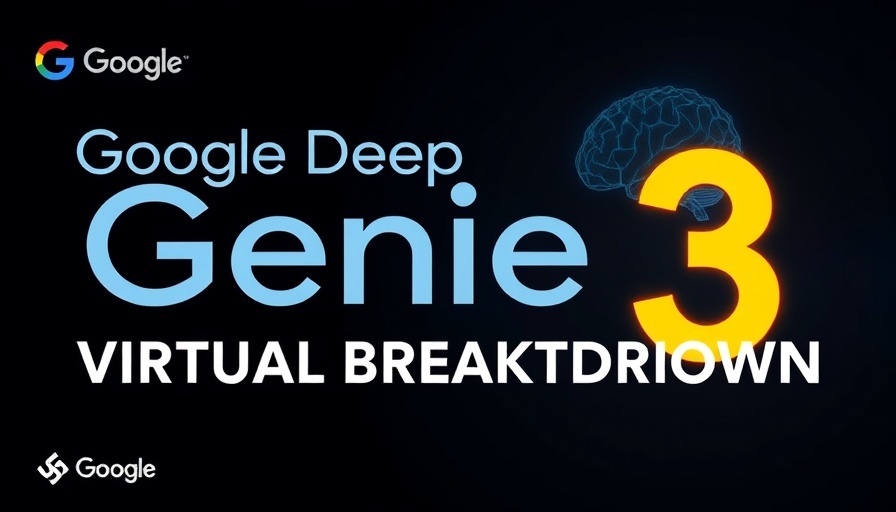
Google DeepMind's Genie 3: A Game-Changing Leap in Virtual Environments
Google DeepMind has unveiled Genie 3, a revolutionary “world model” that pushes the boundaries of artificial intelligence beyond simple video tools. Unlike its predecessors, this innovative model creates real-time, photorealistic environments directly from text prompts, allowing users to wander through stunning landscapes and complex scenarios. Imagine stepping into a dense rainforest or an ancient city and watching it evolve around you at 24 frames per second. This is not merely a technological advancement; it is a groundbreaking experience that could pave the way for significant advancements in artificial general intelligence (AGI).
How Genie 3 Redefines AI Training
Incorporating Genie 3 into training practices heralds a new era for AI agents. Traditionally bound by the limits of real-world scenarios, AI algorithms can now utilize these dynamic, interactive simulations. As DeepMind explains, world models like Genie 3 allow AI systems to “use their understanding of the world to simulate aspects of it,” leading to limitless training opportunities. This shift enables AI to learn complex tasks in safe environments, mitigating the costs and risks associated with real-world learning.
Enhancing Realism in Virtual Worlds
One of the standout features of Genie 3 is its long-horizon consistency, which allows it to remember user interactions and maintain visual and physical coherence for extended periods. For instance, if a user alterations settings within the Genie-generated environment – like changing the weather or introducing new elements – the ecosystem adapts instantly, enhancing the realism of the experience. This capability could have vast multifaceted applications, especially in training humanoid robots and autonomous vehicles, further bridging the gap between virtual simulations and real-world functionality.
World Models: The Future Path to AGI
Experts, including Paul Roetzer from Marketing AI Institute, are vocal about the importance of world models like Genie 3 in progressing toward true AGI. Such models provide the necessary physical context for AI agents, allowing them to grasp vital concepts about movement, interaction, and navigational laws. AGI represents AI that surpasses human cognitive capabilities across a wide range of tasks – something that may become a reality depending on continuous advancements in technologies like Genie 3. With AI being applied in varied sectors from virtual gaming to autonomous vehicle development, Genie 3 stands as a harbinger for the potential that interdisciplinary AI applications hold.
Beyond Gaming: The Ripple Effect of Genie 3
As we look ahead, the implications of this technology extend far beyond digital gaming and robotics. Industry leaders, including Elon Musk, have indicated that the entertainment landscape will see dramatic shifts, predicting a future where AI-generated video games can be created on-the-fly, allowing players to prompt game scenarios in real-time. This could transform gaming experiences, making them more engaging and personalized than ever.
Concluding Thoughts
As Genie 3 demonstrates the significance of innovative AI technologies, it emphasizes the critical importance of training AI in realistic, interactive environments. The path to AGI is laden with potential, and tools like Genie 3 are not just technological marvels; they represent fundamental shifts in how we envision AI’s future. Embracing and understanding these advancements will not only prepare organizations for the next wave of technological evolution but could also define their competitive advantage in an increasingly automated world.
 Add Row
Add Row  Add
Add 




Write A Comment